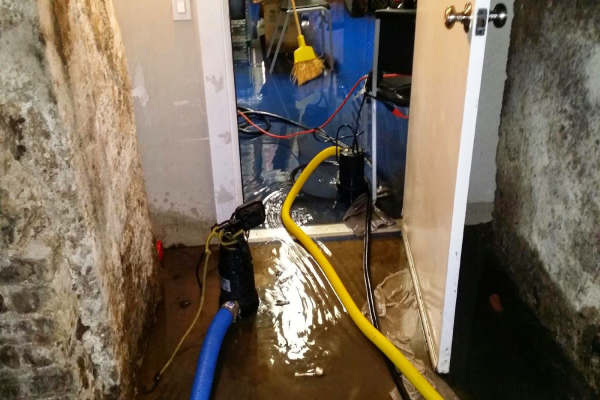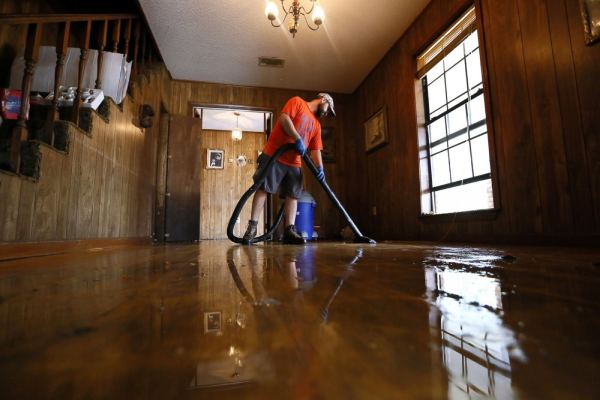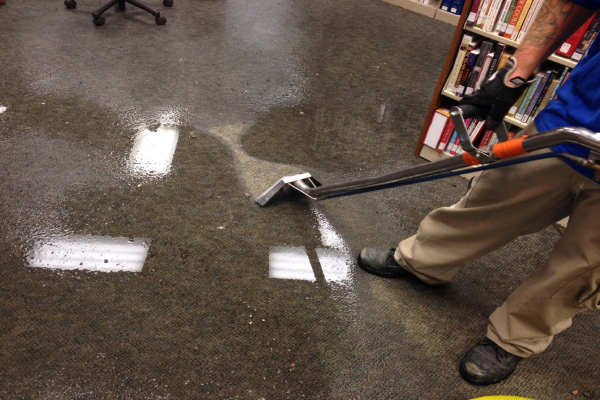Water damage inside buildings is a common and serious concern for homeowners and property managers. The sources of water damage are not equal, some types are more dangerous than others. Category 2 water damage refers to water that contains significant contamination and can cause discomfort or illness if people are exposed to it or accidentally consume it. Understanding what category 2 water damage is and how to address it is essential for safety and effective property restoration. In this article, we will explore all the details about this type.

Common Sources of Category 2 Water Damage
Category 2 water damage comes from sources that add chemical, biological, or physical contaminants to the water. Unlike Category 1, which stems from clean sources such as water supply lines, rain, or melted snow, Category 2 water examples of sources pose much more danger. Common sources include:
- Dishwashers or washing machines that overflow or discharge
- Toilets that overflow with urine (but not feces)
- Sump pumps that fail
- Hydrostatic pressure that seeps (often in basements)
- Aquariums that break and water beds that puncture
Differences Between Water Damage Categories
To understand the severity of Category 2 water damage, it is helpful to compare it with other categories as defined by the Institute of Inspection, Cleaning and Restoration Certification (IICRC):
| Category | Description | Examples | Health Risk |
|
1 |
Clean, sanitary water | Water supply lines, rain, and melted snow | Minimal |
|
2 |
Significantly contaminated water (“Gray Water”) |
Dishwasher overflow, toilet with urine, sump pump failure |
Moderate (can cause illness) |
|
3 |
Totally contaminated water (“Black Water”) |
Sewage, floodwater, toilet with feces |
Severe (high risk of diseasethat needs mold prevention) |
Category 2 water is sometimes called “gray water,” but it is important to note that “gray water” in plumbing contexts can have a different meaning. In water damage restoration, category 2 water damage always means significant contamination.
Steps in Restoring Category 2 Water Damage
What is category 2 water damage? way to restore it? To restore a property with Category 2 water damage, people need to plan and stick to standards from groups like the IICRC. Here is a process that Restoration companies follow:
- Find and Stop the Water Source
Start by finding the water’s source and stopping it to avoid more damage. A plumber or contractor might need to handle this step.
- Check for Safety Risks
Before cleanup starts, figure out any dangers, such as electrical issues or weak building parts. Professionals should use the right protective gear and tools to stay safe.
- Block Off the Damaged Area
They will seal off the area to stop contamination from spreading cat 2 water loss to other sections of the building.
- Get Rid of Water and Damaged Materials
Restoration companies use vacuums or pumps to clear out any standing water. They take out and throw away waterlogged materials like carpet padding or certain drywall types that cannot be cleaned.
- Scrub and Sanitize All Surfaces
You should wash all durable surfaces and any items that can be saved by using soap and water. Afterward, use a suitable disinfectant or biocide to stop microbes from growing.
- Dry the Area
They set up air movers and dehumidifiers to remove moisture from the building and check to confirm the area is dried out.
- Final Cleaning and Restoration
Once the area is dry, they do a thorough cleaning and replace any structural parts or carpet padding that were removed. If the carpets were saved, they put them back in place.
- Post-Remediation Evaluation
Carry out an evaluation after cleanup to confirm the area is safe to use again. This can involve checking air quality or measuring moisture levels.
“A homeowner in Arizona experienced a dishwasher overflow and contacted SERVPRO for immediate assistance. The team arrived within hours, contained the area, and completed restoration in three days…”)
Preventive Measures: Avoiding Similar Water Damage in the Future
Stopping category 2 water damage before it happens saves time and money later. Follow these easy steps to shield your house from potential problems.
- You should inspect your plumbing and appliances to spot leaks or wear before they become bigger problems.
- Think about adding water sensors or automatic shutoff devices. These can detect issues and cut off water to prevent damage.
- Test your sump pump from time to time and do basic upkeep to keep it running.
- Make sure water drains away from your house by ensuring your property has proper drainage, which avoids pooling near the foundation.
- Show everyone in your home what steps to take in a water emergency. If they know what to do when something goes wrong, they will make a huge difference.
Insurance Coverage: What You Need to Know
Most property insurance policies include sudden and accidental water damage, which sometimes covers certain Category 2 scenarios. But if water damage happens due to neglect or poor maintenance, the coverage might have restrictions. You should always go over your policy and talk to your insurance company to learn about what is covered.
Water Damage Restoration in Vancouver
Restoration teams in Vancouver offer emergency services to remove water, dry spaces, and make repairs:
- Water Damage Restoration in North Vancouver
North Vancouver teams respond quickly to address water-related problems. They handle everything from controlling damage and removing mold to restoring properties. Local experts have the tools and knowledge to deal with small leaks or heavy flooding. For expert water damage restoration North Vancouver, contact us now to ensure a swift and thorough restoration of your property.
- Water Damage Restoration in West Vancouver
Experts in West Vancouver provide complete solutions for water-related repairs, starting with inspections and leading to structural fixes. They work to reduce disruptions and get properties back again. For trusted water damage restoration West Vancouver, contact us today to ensure a seamless and effective restoration process for your property.
Complete Water Damage Restoration with Revive Restoration Company
When water damage happens, Revive Restoration Company provides everything you need. Our team handles fast emergency response, water removal, repairs, and mold cleanup to make sure your property is safe and back to what it was before. Reach out to Revive Restoration Company now and let our team help bring your home or business back to normal.
FAQs
- What is Category 2 water damage?
Category 2 water damage includes water that carries a lot of contamination and may lead to sickness or discomfort if people consume it or come into contact with it. - What are common sources of Category 2 water damage?
Common sources include dishwasher or washing machine discharge, toilet overflow with urine (no feces), sump pump failures, and hydrostatic seepage. - How is Category 2 water damage different from Category 1 and 3?
Category 2 water is more contaminated than Category 1 (clean water) but less hazardous than Category 3, which involves grossly unsanitary, black water. - What steps are involved in restoring Category 2 water damage?
Restoration includes containing affected areas, extracting contaminated water, removing porous materials, cleaning and disinfecting surfaces, and thorough drying. - Is Category 2 water damage covered by insurance?
Coverage for Category 2 water damage depends on your specific insurance policy and the cause of the incident.





